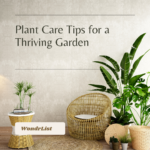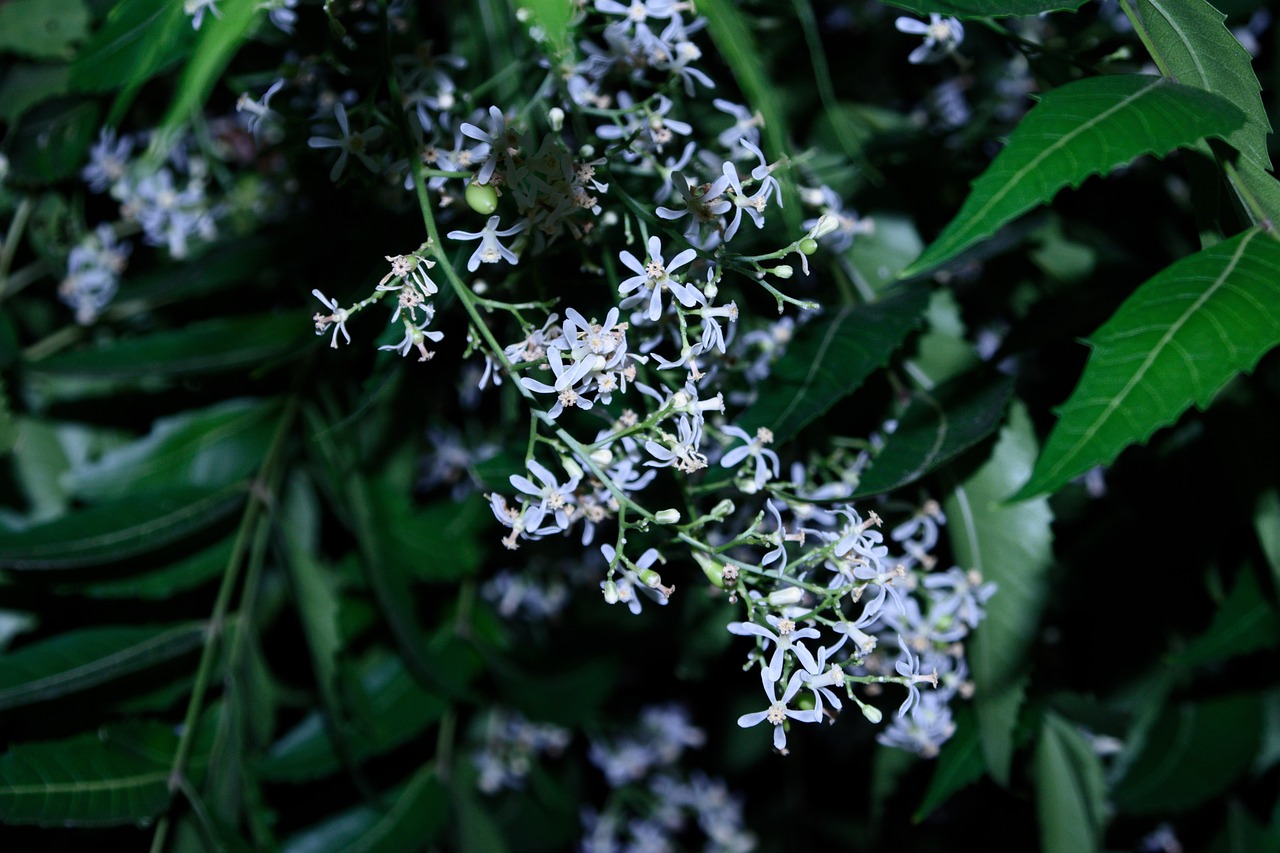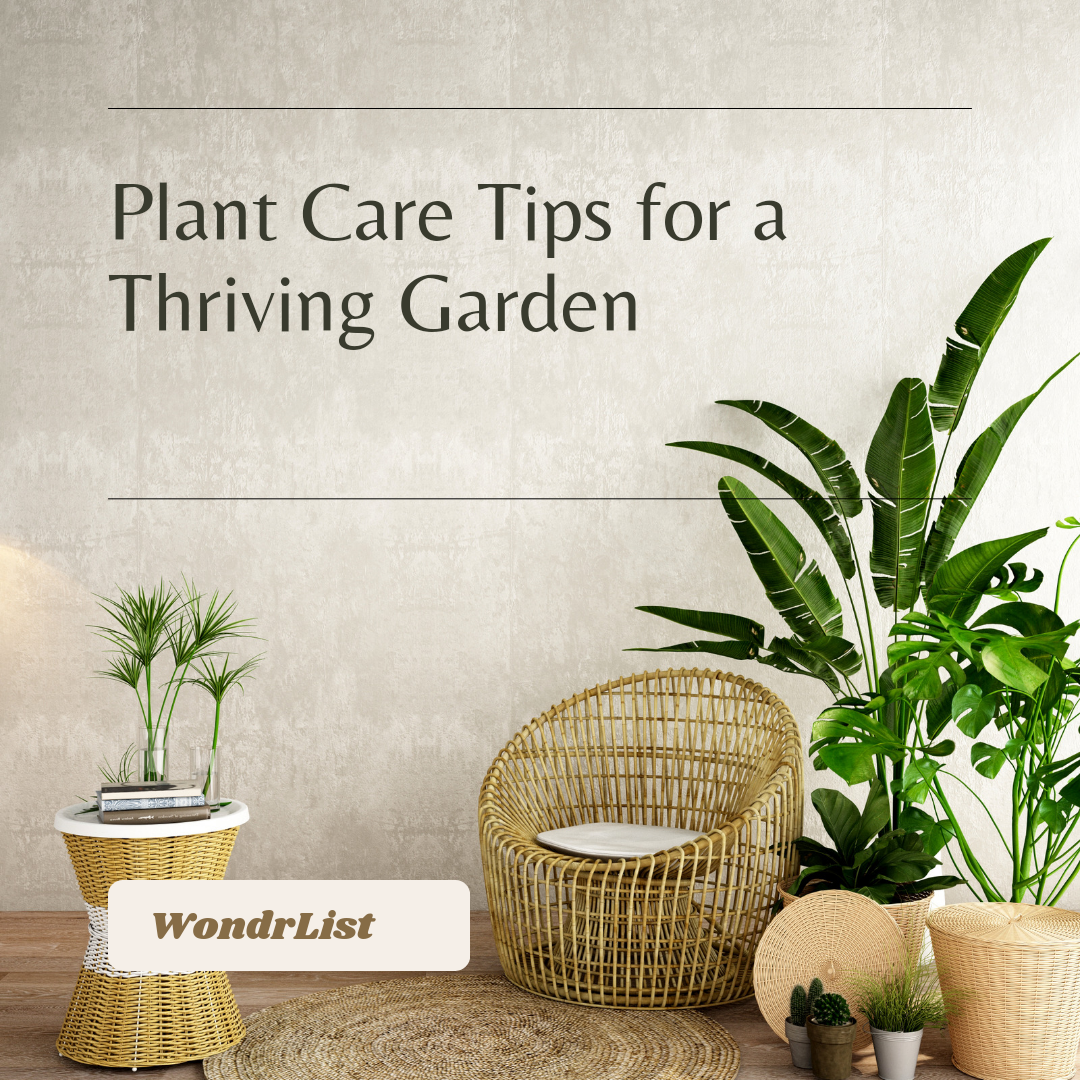
7 Essential Plant Care Tips for Beginners: Keep Your Greenery Thriving All Year Round
Plant Care Tips for a Thriving Garden
By Malik Tanveer
✔️ Checked by Mir Afzal
Having a green thumb and keeping plants healthy requires much more than luck. It takes knowledge of proper care techniques and a consistent routine. Whether you’re growing flowers, veggies, houseplants, or anything else, following these detailed plant care tips will help your plants flourish.
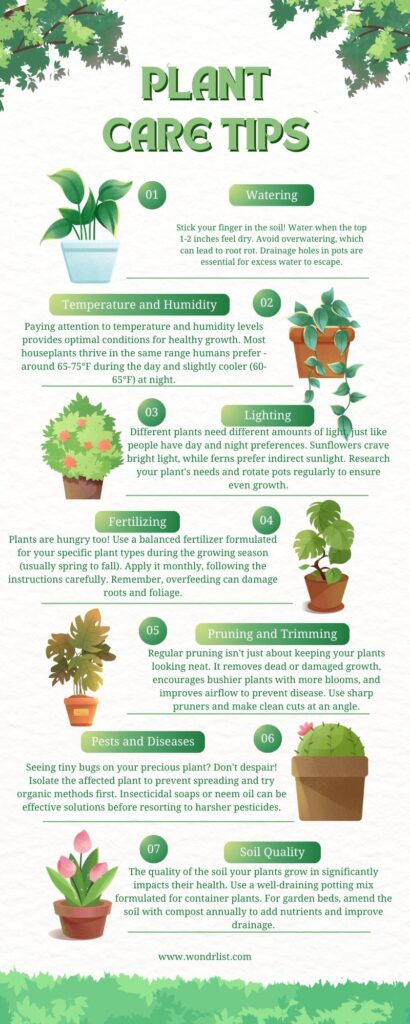
1. Watering
Proper watering is the most crucial aspect of plant care. Underwatering and overwatering are the two biggest killers of plants. The key is maintaining a consistent level of soil moisture.
Different plants have varying water needs based on their root structures, growth phases, pot sizes, and more. As a general rule, water when the top 1-2 inches of soil is dry. Poke your fingers into the soil or use a moisture meter to check.
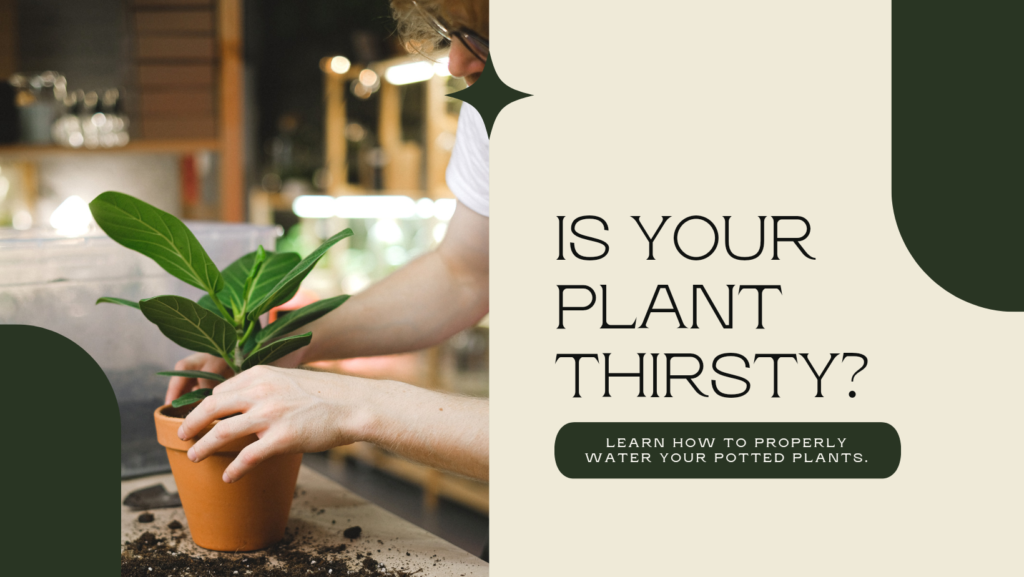
Tip: Some plants, like cacti and succulents, store water in their leaves or stems and prefer to dry out completely between waterings. Research the specific watering needs of your plants.
Avoid letting plants sit in waterlogged soil, as this can cause root rot and fungal issues. Ensure containers have drainage holes and don’t leave saucers filled with water underneath. Use a well-draining potting mix.
For gardens and containers, water at the soil level rather than from overhead to prevent fungal diseases. Soaker hoses and drip irrigation can be very efficient. Time waterings for early morning when it’s coolest.
During hot, dry spells, plants require more frequent watering to prevent wilting and heat stress. When travelling, have someone reliable tend to your plants or use self-watering systems.
2. Temperature and Humidity
Paying attention to temperature and humidity levels provides optimal conditions for healthy growth. Most houseplants thrive in the same range humans prefer – around 65-75°F during the day and slightly cooler (60-65°F) at night.

Tip: Some tropical plants may prefer slightly warmer temperatures (around 75-85°F). Research the specific temperature needs of your plants.
Avoid placing plants in drafty areas or subjecting them to sudden temperature fluctuations. Use pebble trays or humidifiers to increase humidity levels during dry winter months.
For outdoor gardens, choose plants suited to your climate zone’s typical temperature ranges. Plant at the right time based on frost dates. Cover or move cold-sensitive plants when freezing temps approach.
3. Lighting
All plants require sufficient light to photosynthesize and grow, but different varieties have unique lighting needs. Identify whether your plants require bright, direct sunlight (6+ hours per day); medium, indirect light; or low, indirect light.
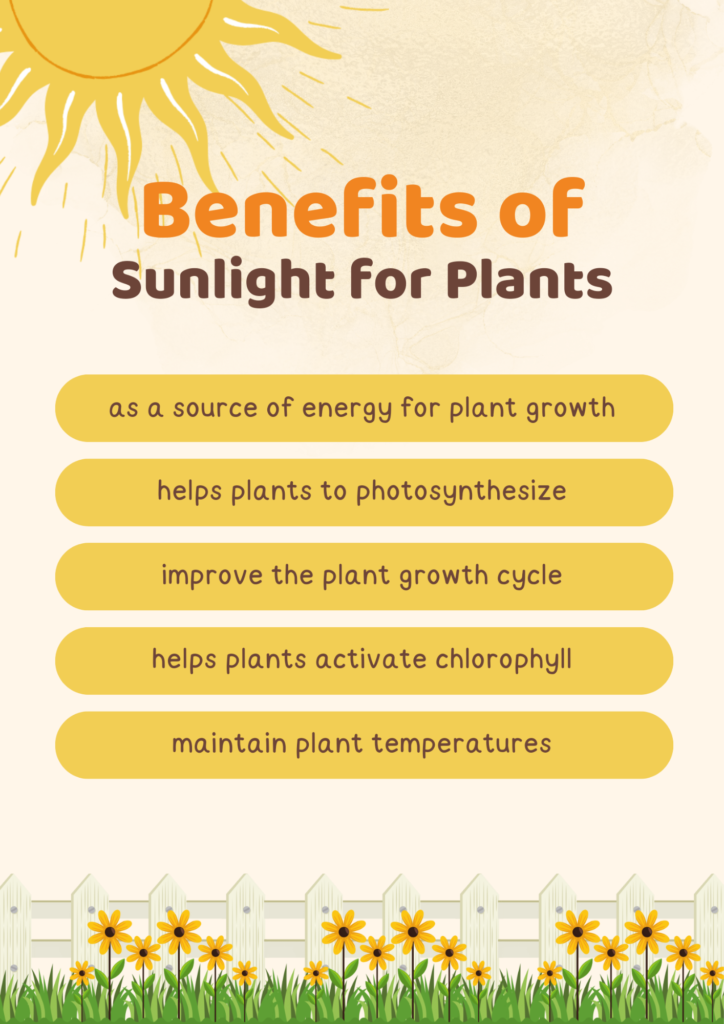
Rotate houseplants regularly to prevent lopsided growth toward the light source. Use sheer curtains to filter harsh rays during peak daylight hours. Supplement natural light with grow lights if needed.
For gardens, pay attention to how sunlight hits areas throughout the day and season. Observe shade patterns and directions. Plant sun-loving plants in the sunniest spots.
Tip: Some flowering varieties may need more sunlight for optimal blooming. Research the specific light requirements of your plants.
4. Fertilizing
All plants deplete nutrients from soil as they grow, so fertilizing is crucial to replace those nutrients. Use a balanced, water-soluble fertilizer formulated for your specific plant types. Follow instructions carefully, as over-fertilizing can damage roots and foliage.
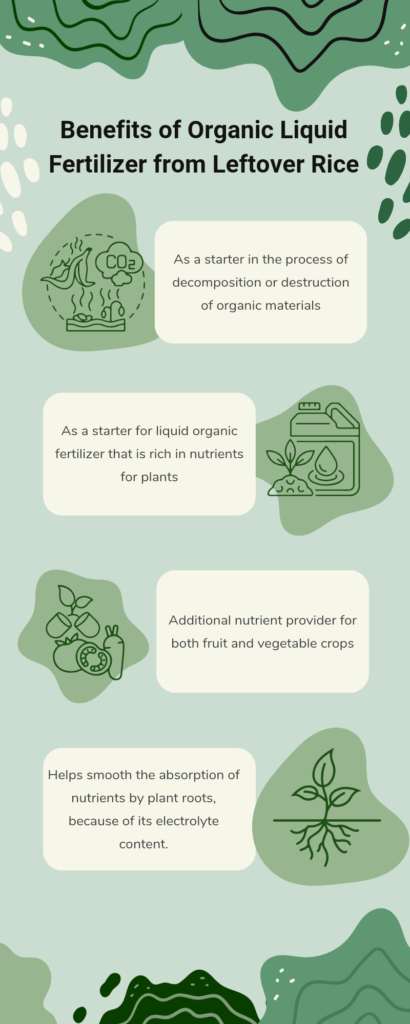
For most plants, feed with diluted fertilizer once a month during the growing season (spring through fall). Allow soil to dry slightly between feedings.
Supplement potting mixes and garden soil with compost annually to add nutrients and improve texture. For outdoor beds, apply granular fertilizer a couple of times per year or use compost tea.
Tip: Organic fertilizers, like compost, are a good alternative to water-soluble fertilizers and can be beneficial for the environment.
5. Pruning and Trimming
Regular pruning and trimming does more than just shaping plants and keeping sizes in check. It also removes dead or damaged growth, encourages bushier growth and flowering, and improves airflow to prevent disease.

Use clean, sharp pruners and make cuts just above an outward-facing bud or node at a slight angle. This angle prevents moisture accumulation that can lead to rot. Remove entire canes, limbs, or stems as needed rather than leaving stubs.
Pinch off dead flower heads to promote continued blooming. Pluck yellowed leaves to improve the plant’s appearance and divert energy toward new growth.
6. Pests and Diseases
Nothing ruins beautiful plants faster than an infestation of harmful insects or fungi. Inspect plants frequently (top and undersides of leaves) for any signs of pests or disease.
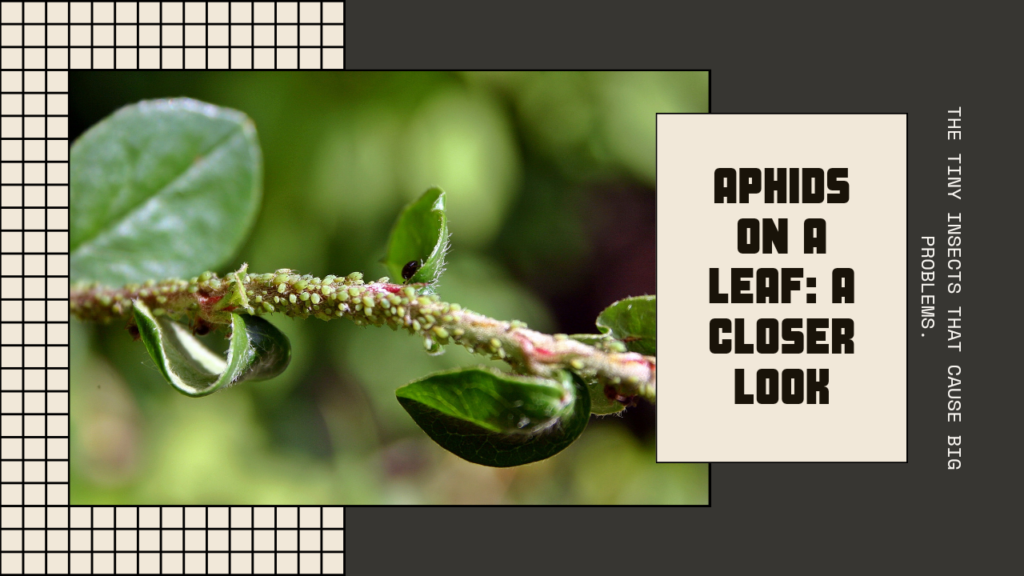
Isolate any affected plants immediately to avoid spreading. For infestations, use insecticidal soaps, neem oil, or other least-toxic remedies before resorting to harsher pesticides.
Tip: Whenever possible, use organic pest control methods like insecticidal soaps or neem oil to avoid harming the environment or beneficial insects.
Good air circulation, sufficient spacing between plants, and avoiding overhead watering prevents many fungal diseases. Prune overcrowded areas to improve airflow.
7. Soil Quality
The quality of the soil or potting mix plants grow in has a huge impact on their vigor. Plants need nutrient-rich, well-draining soil that allows oxygen to reach the roots.

For containers, use fresh potting mixes formulated for the specific plants you’re growing. These are fluffy and porous. Amend with compost or fertilizer per product instructions.
For garden beds, work several inches of nutrient-rich compost or manure into the soil each spring. Consider having your soil tested every few years to check nutrient content and pH levels. Adjust by adding amendments as needed based on results.
Tip: Some plants prefer slightly acidic or alkaline soil. Testing your soil pH will help you determine if you need to add amendments to create the optimal environment for your plants.
Seasonal Adjustments
Throughout the year, slight adjustments to your plant care routine may be necessary to account for seasonal changes. Here are some tips:
Spring: Gradually increase watering frequency and light exposure as days lengthen. Begin fertilizing most plants.
Summer: Water more frequently, especially during hot and dry spells. Provide shade protection for midday sun if needed.
Fall: Reduce watering frequency as days shorten and temperatures cool. Gradually withhold fertilizer in preparation for winter dormancy.
Winter: Water sparingly, only when the soil feels dry to the touch. Most plants require less light during winter. Keep them away from cold drafts and heaters.
Troubleshooting Plant Problems
Even with the best care, plants can sometimes develop problems. Here are some common issues and solutions to watch out for:
Wilting leaves: This could be a sign of underwatering, overwatering, or heat stress. Check the soil moisture and adjust watering accordingly.
Yellowing leaves: This can be caused by nutrient deficiency, overwatering, or insufficient light. Address the underlying cause based on your plant’s needs.
Drooping leaves: This could be due to underwatering, root rot, or temperature stress. Check the soil moisture and root health.
Pests or diseases: Regularly inspect your plants and treat any infestations promptly with organic methods whenever possible.
By following these plant care tips and adapting them to your specific plants and environment, you’ll be well on your way to having a thriving garden. Remember, the key is to provide your plants with the right balance of water, light, nutrients, and care to keep them happy and healthy.



